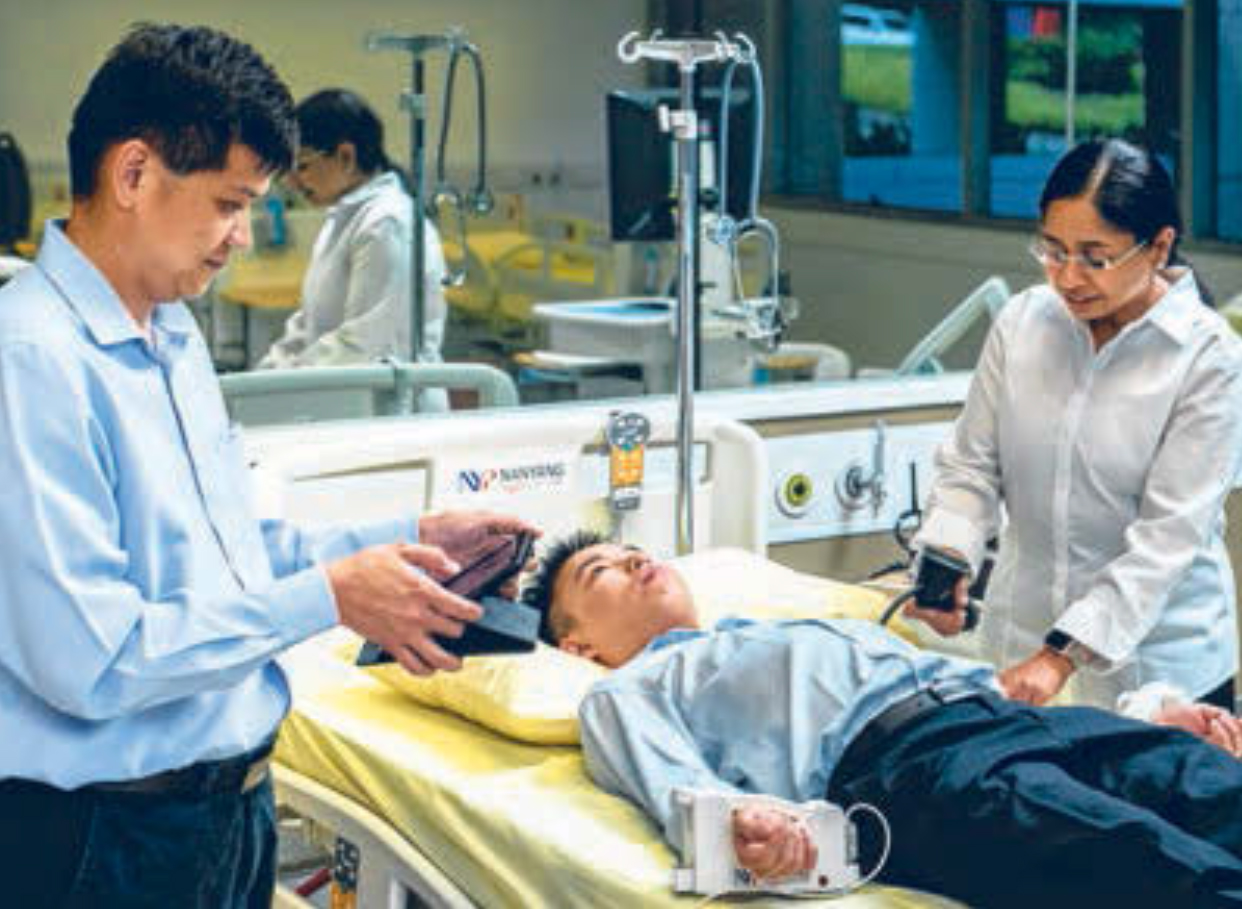Researchers at Nanyang Poly and TTSH developing non-invasive device to measure blood flow.
The Straits Times (12 January 2019) - When he learnt how currency counting machines use sensors and magnetic signals to identify bank notes, Dr Phua Chee Teck had a eureka moment.
Could a similar system be used to detect how blood vessels are working, he wondered.

Nanyang Polytechnic’s Dr Phua Chee Teck and Tan Tock Seng Hospital’s Dr Rinkoo Dalan showing how their device works.
PHOTO: NANYANG POLYTECHNIC.
Using a blood-pulse measurement device which uses magnets, Dr Phua, who is deputy director of sustainability engineering at Nanyang Polytechnic's (NYP's) School of Engineering, realised he could assess the blood flow rate from the radial artery, where the pulse is normally taken.
Researchers at NYP and Tan Tock Seng Hospital (TTSH) have since joined hands to develop a prototype device which can test whether blood vessels can cope with reduced blood flow.
It is the first of its kind to allow for endothelial dysfunction (deficiencies in a person's blood vessel system) to be detected in a non-invasive way.
"The whole device is connected wirelessly, and the data will be analysed after the 20-minute process is completed," Dr Phua said.
The device holds some promise for cardiovascular patients. In 2017, one in three deaths in Singapore was due to heart disease or stroke.
Early detection can save lives. One way is to measure if a patient's blood vessels are working well. Current methods for testing endothelial dysfunctions are invasive, and often time-consuming.
The prototype device analyses if there is damage to the small and large blood vessels, which is common in diabetic patients. Large blood vessel damage is commonly associated with stroke and heart disease, while small blood vessel damage often results in issues with the eyes, kidneys and nerves.
The procedure is simple and requires the device's two clamps to be attached to the patient's wrists for 20 minutes.
The patient's resting pulse and blood flow are measured first before the blood flow is temporarily restricted from the patient's left arm and subsequently released.
The machine will then measure the intensity at which the blood flows back into the left arm to assess if the patient's vessels are working at their optimum levels.
It took a year for the researchers to design and develop the device, and come up with an algorithm to analyse patients' results.
The team also conducted clinical trials. The prototype device was developed in partnership with Dr Rinkoo Dalan, a senior consultant in endocrinology and diabetes at TTSH.
The effort is supported by the National Health Innovation Centre and the National Healthcare Group's Centre for Medical Technologies and Innovations.
"We want to measure the elasticity of blood vessels. When blood flow is restricted and then released, blood vessels are supposed to dilate to their full size. If it is stiff, it will not dilate as much, in comparison to flexible blood vessels," said Dr Dalan.
She said the device is also intended to be a good way of predicting whether someone is suffering from diabetes.
It can differentiate between patients with severe and early diabetes. Tests of diabetic patients tend to reveal unnatural readings, which suggest that the blood vessels are inelastic.
The researchers are now looking to make the device easier for any healthcare professional to use.
They will also examine how it can be made cost-effective for widespread use. The plan is for the team to work with a local industry partner to introduce this device into the regular body check-up process at clinics.
Dr Phua and Dr Dalan are now more than three months into designing the new prototype, which will be ready in 2021.